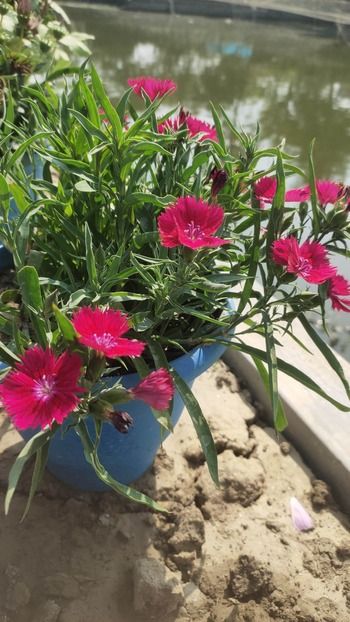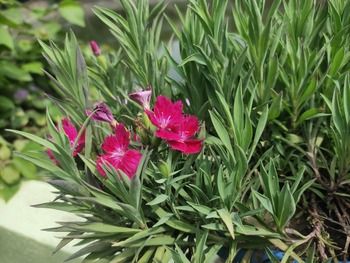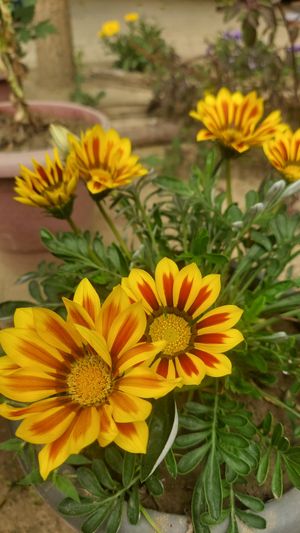
I love growing Dianthus Chinensis in my garden due to its charming colors. It is also known as China pink or Rainbow pink.
In this article, I will provide growing and caring tips for Dianthus chinensis.
Before getting started it's important for us to know the basics of this flowering plant.
It attracts a lot of butterflies and hummingbirds in my garden.
Dianthus chinensis Information
| Common Name | Dianthus chinensis |
| Family | Caryophyllaceae |
| Ideal temperature to grow | 15 to 22 degree Celcius |
| Origin | China |
| Habitat | Grassy slopes, meadows |
| Blooming Period | Spring to early summer but I noticed blooms in winter as well in tropical region |
| Height | 10-30 cm |
| Flower Color | Various shades including pink, red, white |
| Sunlight | Full sun in winter, 4 hours direct sunlight in rest of the seasons |
| Soil | Well-drained, slightly alkaline |
| Watering | Moderate |
Tips for getting more blooms on Dianthus - Deadheading
The most important point is to deadhead after all the buds bloomed.
Start deadheading after all the buds are bloomed.
If you are not sure how to do deadheading, do not worry. Deadheading is nothing but the pruning or removing of old growth and seed heads from the stems.
If you deadhead the old bloomed flowers, you can expect more blooms.
Soil preparation for Dianthus chinensis
If you are planting it in a pot then put 50% normal garden soil, 25% cocopeat and 25% vermicompost.
(You can make your vermicompost at your home too)
If you prepare the soil in this way then your plant will be greener and healthy as well.
But if you are planning to grow it from seeds, then follow this:
80% cocopeat and 20% vermicompost.
Then place the seeds into the soil and water it.
Fertilizer
After every deadheading, fertilizer is necessary. It will be a heavy feeder at that time.
If possible, try to use organic fertilizer.
Best to use: NPK 10-10-10
Watering
Once you notice the soil top is dry, you can consider watering it.
Too much water is not good for Dianthus.
Make sure the water drainage is working properly.
Propagation of Dianthus
We can propagate it both from seeds and cuttings.
Pick some healthy stems and cut those.
No need to make it dry. Just plant it in your normal garden soil.
Friendly tip: Water the soil before planting so that the soil becomes soft enough.
For getting seeds, avoid deadheading for a while and collect the seeds from old-grown blooms. You can store the seeds in a cool and dry place and wait for the seeding season.
Types of Dianthus Chinensis
I have almost 10 different types of Dianthus in my garden.
You can find that there are a lot of color variants of this flower. Try to pollinate with different colors and in this way, it can create new color combinations.
Here are some of my Dianthus flowers.


The above flowers are grown from previous years' plants.
More questions on Dianthus
Is dianthus a perennial?
It is perennial as well as annual. Do not get confused. In tropical areas, it blooms in winter as well as autumn and summer.
Is Dianthus deer resistant?
I have never seen a deer to eat Dianthus. I guess they do not like the taste of these grass-like leaves.
Will your Dianthus come back every year?
Yes, it will. Just protect your Dianthus from heavy rain and snowfall as much as possible. Next year it will bloom again.


